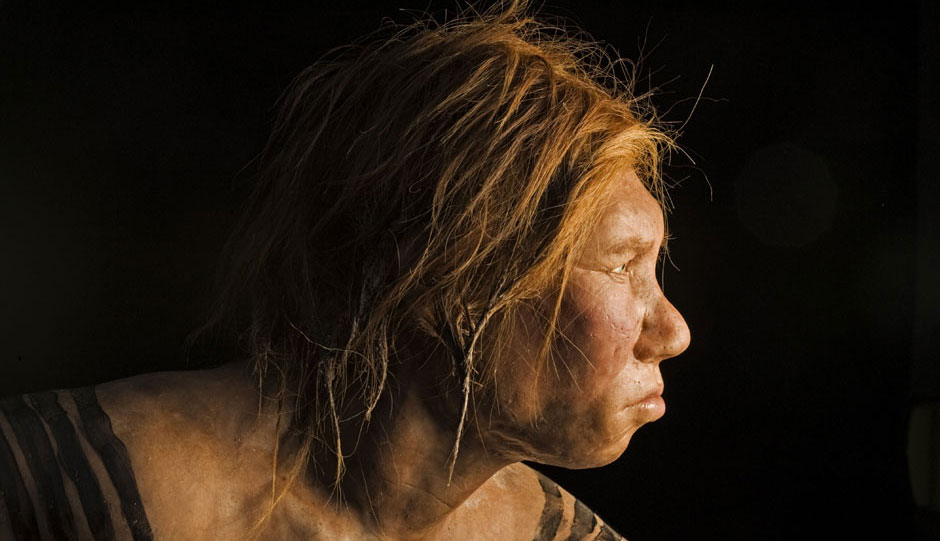
A genome from a female found in Croatia shows how conditions from schizophrenia to arthritis are influenced by our ancient human ancestors.
As it turns out, if you have bad arthritis or you’re slathering on aloe for an early Fall sunburn, Neanderthal ancestors may be partly to blame.
Scientists announced the second complete sequencing of a Neanderthal genome, made using the 52,000-year-old bones of a female found in the Vindija cave in Croatia.
Together with the genomes from another Neanderthal woman and a host of modern humans, a suite of analyses is yielding new clues about how DNA from Neanderthals contributed to our genetic makeup and might still be affecting us today.
For instance, one new study appearing in the journal Science suggests that Neanderthal genes contribute 1.8 to 2.6 percent of the total genetic makeup for people of Eurasian ancestry. That’s slightly up from a previous estimate of 1.5 to 2.1 percent.
The same paper also found that several areas of the new Neanderthal genome match segments in certain modern humans that are closely associated with various health concerns, including blood cholesterol levels, schizophrenia, eating disorders, and rheumatoid arthritis.
But don’t go blaming Neanderthals for all your medical woes, cautions study leader Kay Prüfer at the Max Planck Institute for Evolutionary Anthropology in Leipzig. After all, hundreds if not thousands of factors influence gene expression.
“These are just associations, so that doesn’t mean if you have a particular variant of a gene, you either will or won’t have a disease. It means sometimes you might,” Prüfer says.
What’s more, some of the Neanderthal contributions are potentially helpful.
“When we looked, there was one variant that was more certain, for LDL cholesterol, and the gene the Vindija individual carried is protective,” Prüfer says. Low-density lipoprotein, commonly called “bad” cholesterol, is associated with fatty buildups in arteries, so genetic protections would help guard against issues such as heart disease.
“A common misconception is the things that come from Neanderthals are generally bad,” Prüfer says, “but that’s not entirely true.”
GENETIC LINK
The DNA used to construct the new genome came from an individual dubbed Vindija 33.19, named for the cave where her bone fragments were found.
Though partial genomes have been sequenced from at least five other individuals, the Vindija bone fragments preserved enough intact DNA for Prüfer and his colleagues to parse out a highly detailed genome.
From there, they were able to distinguish between the two sets of genes the Vindija female inherited from her parents. That’s only been accomplished once before, from a 122,000-year-old sample from the so-called Altai Neanderthal found in Siberia.
By effectively doubling the amount of detailed Neanderthal genetic information, researchers are starting to more accurately home in on just how much Neanderthal DNA persists in modern humans and where, exactly, it comes from.
“The Neanderthals who mixed with our ancestors seem to be more closely related to the Vindija Neanderthals, the ones from Europe,” Prüfer says. “And it doesn’t matter where you look in the world—even people in Asia are also more closely related to that Neanderthal,” despite the fact that the Altai Neanderthal bones are geographically closer.
In a separate study released today in the American Journal of Human Genetics, two of Prüfer’s colleagues, Michael Dannemann and Janet Kelso, took a slightly different tack. Rather than look at disease-related genes, they looked at how ancient genes might account for physical appearance and even some behaviors.
This team compared the Altai Neanderthal’s genes with genetic and—for the first time—physiological data from 112,000 individuals of northern European descent who contributed their information to the UK Biobank.
Again, just having the gene isn’t a guarantee for anything—the Neanderthal genes are just as likely as modern genes to have an effect. But it’s intriguing to know that they remain firmly lodged in our makeup.
Dannemann says he and Kelso plan on repeating the research using the new Vindija genome and an expanded Biobank cohort of 500,000 people, hoping to reveal even more hidden associations.
“The data are still pretty sparse, but hopefully it will not take as long to double the Neanderthal genome again,” Dannemann says. “Having more references will help us understand if certain gene variations were common in Neanderthals.”
Miguel Vilar, lead scientist for National Geographic’s Genographic Project, says Vindija is a great advance in building a more complete picture of Neanderthal history, as well as understanding how their ancestry affects us still. He expects even more genetic information to flow from labs around the world, rapidly compounding what we know.
“The fact that we’re now able to pinpoint specific traits is a huge step ahead of what we knew before,” Vilar says. The new research is also a step toward solving the mystery of why Neanderthal genes have persisted in our genome over the last 40,000 to 50,000 years.
“We’ve known there was a mixing already now for 10 to 12 years. Now we’re getting to the meat of why these genes survived,” Vilar adds. “Trying to explain why those traits were important in the context of human evolution, that’s where the greater truths will come.”





